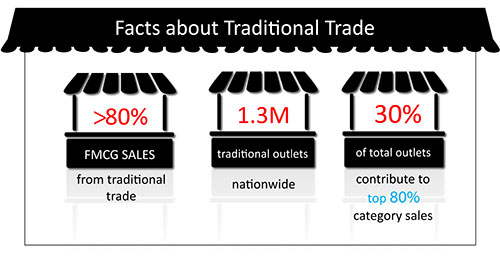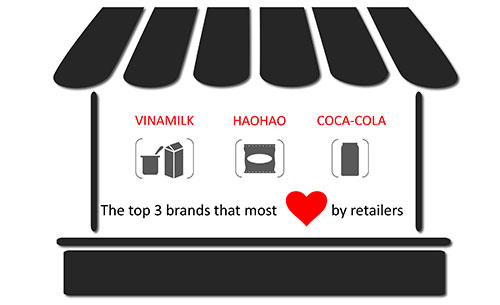Despite FMCG sales growth, retailers remain cautious

The first quarter witnessed a 3.4 per cent volume growth in the six key cities of Hanoi, Ho Chi Minh City , Haiphong, Cantho, Nha Trang and Danang, following a sharp downturn in 2014. Beverage is the key factor behind growth recovery, but other categories such as food and home care are also picking up.
The report also found that more than 80 per cent of FMCG sales in Vietnam still comes from traditional trade channels which include around 1.3 ,million FMCG stores across the country. The sheer number of traditional stores makes Vietnam one of the most complex markets for FMCG manufacturers to build distribution chains and manage logistics.
Furthermore, only 30 per cent of these traditional stores contribute to the top 80 per cent of sales. Therefore, to win in this traditional-trade dominated market, manufacturers must identify the right stores to target, which is not an easy feat in such a large, dynamic and ever-changing retail market.
In addition to the complexity and a large number of traditional stores, the power to make or break a brand or product lies with traditional retail store owners. The report shows that only 70 per cent of traditional retail stores comply with manufacturers’ request to stock their products, highlighting the importance of winning over a retailer.
Among the brands most supported by Vietnamese retailers, Hao Hao, Vinamilk and Coca-Cola stand at the top, with more than half of store owners indicating willingness to stock their products more and recommend them to shoppers.

Nielsen’s executive director of retail measurement services Nguyen Huong Quynh addressed the issue, stating: “Despite the growth of FMCG, the Retailer Confidence Index reached the score of only 71, which shows significant levels of hesitation. The main reason is that retailers are mainly concerned about what directly impacted their businesses, such as extra stock, margin and customer services support.”
“Therefore, it is critical for manufacturers to completely understand these concerns, identify the right stores to target and ensure that retailers comply and stock their products in-store throughout the year. This requires a combination of different strategies based on retailer and shopper understanding in order to build a picture of success for sales and to execute in the market,” she added.
With such a complex retail market, it is essential for manufacturers to identify the right stores to target their priority investment. Only when this stage is completed can manufacturers focus on launching a logical attack plan for market penetration, sales force deployment, direct vs. in-direct store strategy and stock availability.
A picture of success is normally comprised of a combination of pricing, assortment, trade activity and in-store communication. However, the big challenge for manufacturers is to find a way to ensure that these component parts are executed in store and complied by retailers.
What the stars mean:
★ Poor ★ ★ Promising ★★★ Good ★★★★ Very good ★★★★★ Exceptional
Latest News
More News
- First members of Danang International Finance Centre revealed (December 22, 2025 | 17:39)
- Human-centred governance seen as key to AI development (December 19, 2025 | 18:19)
- Top 10 notable events of Vietnam’s industry and trade sector in 2025 (December 19, 2025 | 14:00)
- Tungsten surges to 12-year high as world enters a new 'black gold' race (December 18, 2025 | 17:27)
- Vietnam’s coffee exports set new record despite price pressures (December 18, 2025 | 17:13)
- Garment and textile sector seeks new growth after volatile year (December 18, 2025 | 17:01)
- VinSpeed and Siemens strengthen cooperation for high-speed rail development (December 18, 2025 | 16:53)
- High-tech adoption for TH true MILK (December 18, 2025 | 13:39)
- Takeda supports health resilience amid climate change challenges (December 18, 2025 | 12:39)
- Mondelez Kinh Do - a chapter of purpose-led leadership in Vietnam (December 18, 2025 | 09:44)


















 Mobile Version
Mobile Version